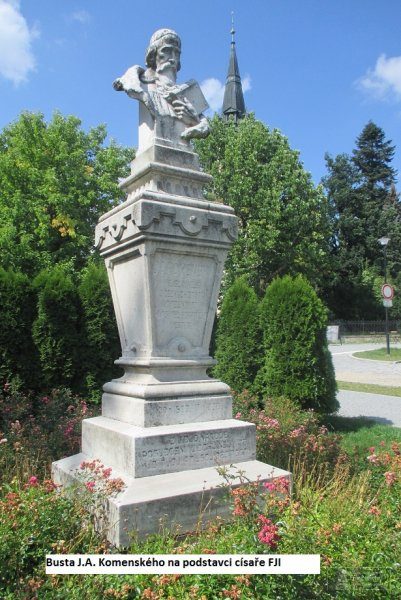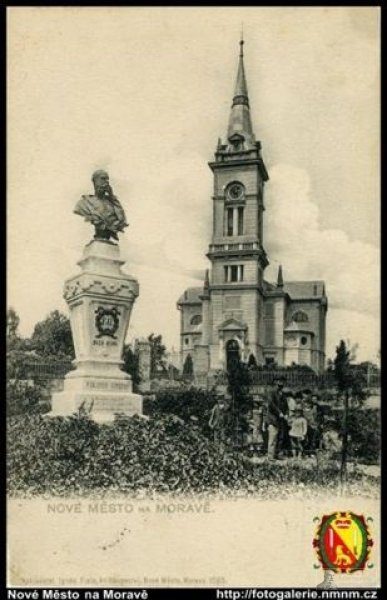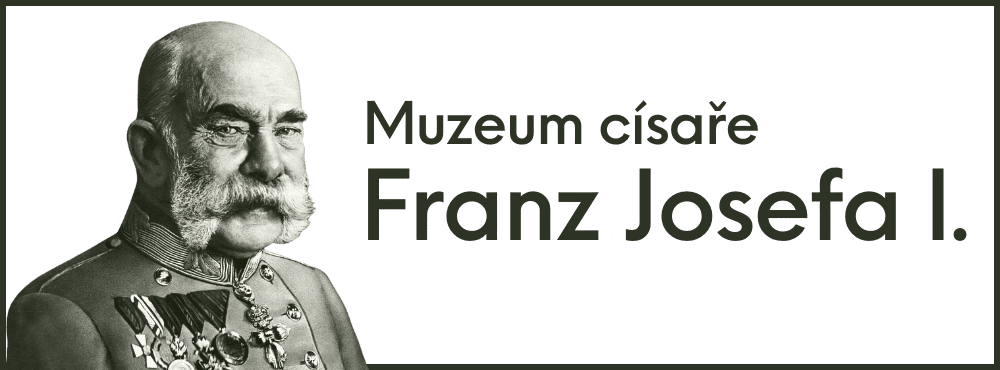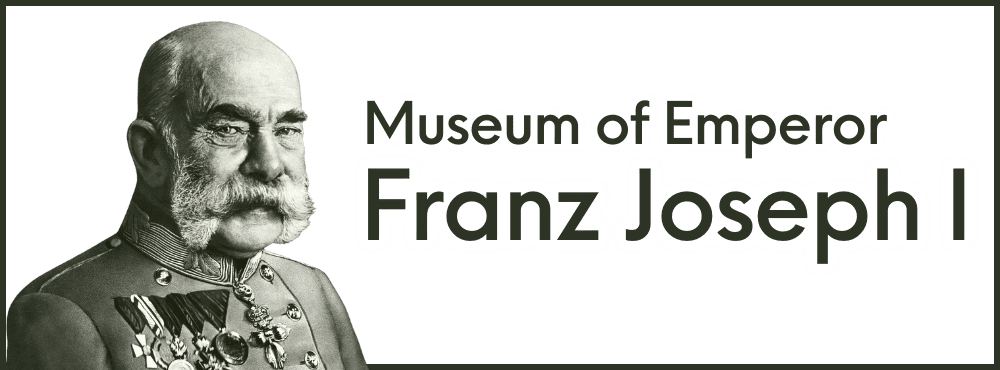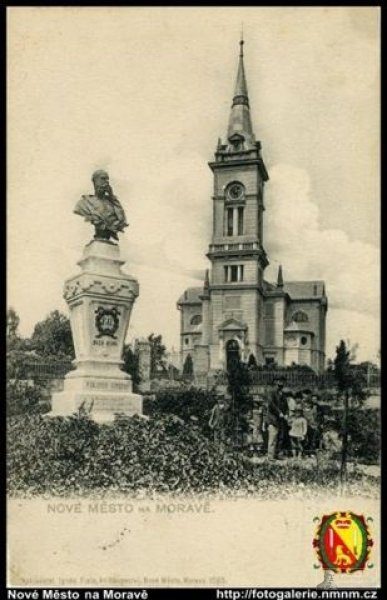On the pedestal of the bust of Emperor FJI today is the bust of J.A. Comenius
Nové Město na Moravě (German: Neustadt in Mähren) is a town in the district of Žďár nad Sázavou in the Vysočina region, 10 km east of Žďár nad Sázavou, on the southern edge of the Žďárské vrchy. It was founded around 1250 by Boček from Obřany, the founder of the Cistercian monastery in Žďár nad Sázavou. It enjoyed its greatest prosperity during the Renaissance under the lords of Pernštejn.
In the years 1896 – 1898, the evangelical church building was built in a historicist, mainly neo-Renaissance style. The author of the proposal was the Viennese architect Hans Glaser. The construction was carried out by Josef Sadílka's company with the great support of foreign religious institutions and the proceeds of collections in the region.
The construction of the church was immediately followed by the establishment of a park in its neighborhood and on the area of the adjacent square, where a monument to Emperor Francis Joseph I stood since 1898, erected by the local Evangelical Church out of gratitude that religious equality was implemented during his reign. The bust of the emperor was by the sculptor Victor Tilgner.
The news about the declaration of an independent Czechoslovak state spread in Nové Město in Moravia on the morning of Tuesday, October 29, 1918. A joyous uproar reigned immediately after the city, to which the city council communicated the glorious news by decrees and drums. The houses were immediately decorated with red and white flags. Jubilant enthusiasm appeared on all faces, joy that the war is over and that finally after 300 years we are masters of our home again.
The insignia of the former Austria, double-headed eagles, were taken down from all official buildings and hung on a gallows erected in the square. After the parade, the youth tore down the bronze bust of Emperor Francis Joseph, erected by the local Evangelical Church.
In a joint meeting of the presbytery and the council on August 15, 1920, it was resolved to erect a monument to Jan Amos Comenius on the site of the former monument to Emperor Francis Joseph I. A bazaar should be organized to pay for the storefronts, which then happened on September 8, 1920. Bazaar organized partly in the park near the church, partly in the hall. He did great. On October 11, 1920, the modification of the plinth of the Comenius monument was begun by stonemasons of Nedved. The work took place in the parish shed. The old inscriptions were carved, the new ones carved. On the lower stone there is an inscription: "From 1784 to 1898, the evangelical reformed tolerance church of the Lord stood on this place." The Comenius monument is in the place where the Lord's table stood in the old church.
